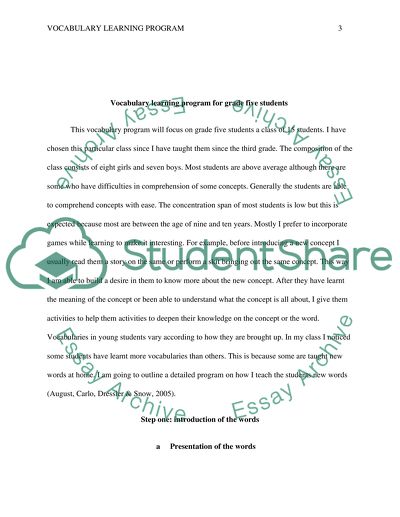Cite this document
(“Vocabulary learning program Essay Example | Topics and Well Written Essays - 1750 words”, n.d.)
Vocabulary learning program Essay Example | Topics and Well Written Essays - 1750 words. Retrieved from https://studentshare.org/education/1702036-vocabulary-learning-program
Vocabulary learning program Essay Example | Topics and Well Written Essays - 1750 words. Retrieved from https://studentshare.org/education/1702036-vocabulary-learning-program
(Vocabulary Learning Program Essay Example | Topics and Well Written Essays - 1750 Words)
Vocabulary Learning Program Essay Example | Topics and Well Written Essays - 1750 Words. https://studentshare.org/education/1702036-vocabulary-learning-program.
Vocabulary Learning Program Essay Example | Topics and Well Written Essays - 1750 Words. https://studentshare.org/education/1702036-vocabulary-learning-program.
“Vocabulary Learning Program Essay Example | Topics and Well Written Essays - 1750 Words”, n.d. https://studentshare.org/education/1702036-vocabulary-learning-program.


